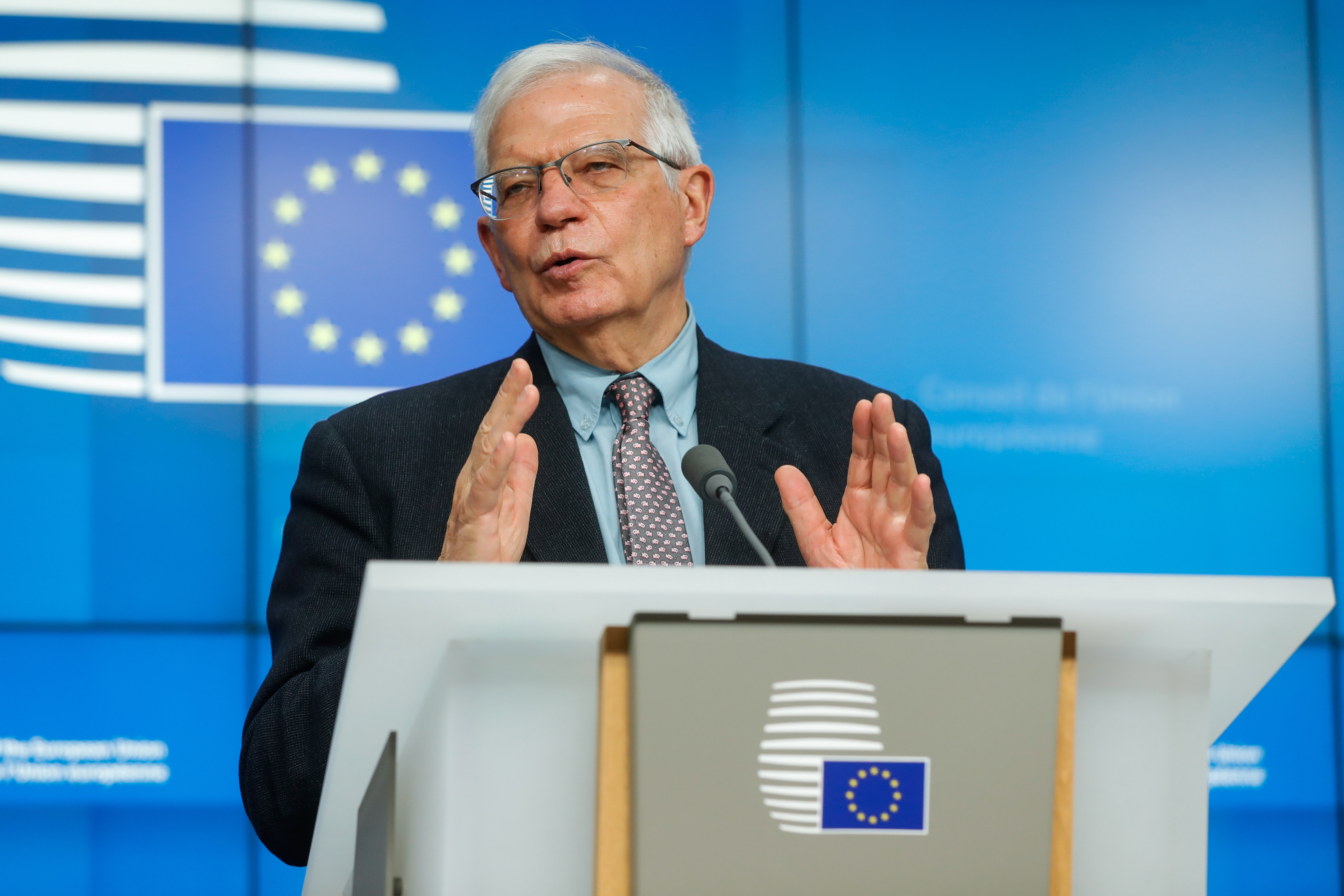Invasion of Ukraine
The European Peace Facility makes its debut at a crucial time

picture alliance / EPA | STEPHANIE LECOCQ
Amid a slew of announcements of Western support to counter Russia’s aggression in Ukraine, the EU on Sunday agreed to provide €500 million in arms and military equipment to the Ukrainian army. In what many see as a watershed moment, it is the first time ever that the EU will buy arms to support a country at war. To do so, the EU will make use of the European Peace Facility (EPF), a new, off-budget instrument that was created in March 2021 to enhance the Union’s ability to support military actions. Within a year of becoming operational, the fund is already put to use in this acute crisis.
EU foreign ministers approved the provision of the arms during an extraordinary video call on Sunday evening, in a response to a request for support from Ukrainian foreign minister Dmytro Kuleba. On top of military supplies promised by Germany, Sweden, Denmark and the Netherlands, the EU now plans to supply the Ukrainian armed forces lethal equipment ranging from anti-tank and anti-aircraft missiles to fighter jets. The foreseen support will include a €450 million support package for arms and another €50 million of non-lethal supplies, such as fuel and protective equipment. On Monday 28 February, EU defence minsters already followed up with another call to coordinate the delivery of the equipment.
Already when announcing the plan for the EPF last year, the EU's foreign affairs representative Josep Borrell pointed out that the use of the instrument would open up a completely new dimension of the EU's ability to act in defence policy. Since the EU treaties prohibit the use of the EU's normal multi-annual budget for military or defence-related expenditure, the European heads of state and government instead created the intergovernmental and “off-budget” EPF.
With a spending ceiling of €5 billion until 2027, the initial idea behind the establishment of the fund was to support the EU’s geopolitical ambitions in the security realm. The inability to provide arms to partners was seen as an important hole in the EU’s toolkit that allowed other actors to expand their influence at the expense of the EU. Being able to not only train, but also arm partner countries allows the EU to establish comprehensive partnerships and thereby strengthen its global footprint.
At the time of the EPF’s creation, few people could have foreseen that one year later it would be used to supply fighter jets to Ukraine in a war with Russia. However, with the mechanism in place, there could not have been a more appropriate tool to provide immediate support for the Ukrainian war effort against the Russian aggression. By using the EPF for this purpose, the EU and its member states have entered a new era in which the EU is able to support its geopolitical ambitions in material terms.
The invasion of Ukraine has provoked a new sense of unity within the EU, which has enabled the Member States to move forward quickly on an issue which was so contentious in the past. In an interview with the Associated Press, European Council President Charles Michel on Monday said, “this is demanded by the circumstances of history. Demanded by circumstances that none of us could have imagined”. Contrary to Russian President Vladimir Putin’s bet on Western disunity, EU Member States came together decisively to approve the use of this fresh tool in the EU’s toolbox for this unexpected purpose. This is an important step in the EU’s development as a geopolitical power and it will hopefully help the Ukrainian war effort for the time to come.
